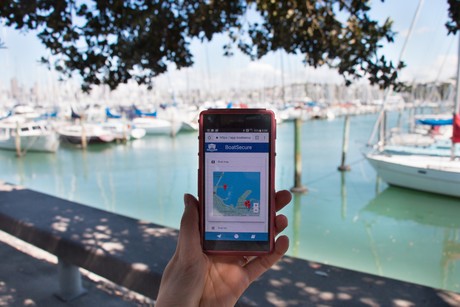Land of the LoRa cloud

New Zealand’s Spark is fast-tracking the build of a long-range IoT network to meet strong customer demand.
Spark is building a long-range network to enable the Internet of Things (IoT) in New Zealand’s most populated urban centres, switching on sites in Christchurch, Wellington, Hamilton and Auckland in time for the New Year.
The telco has been testing the technology with partners from a range of industries, from agriculture through to marine, and is seeing strong demand for the network as a result. Resource monitoring company Levno is working with Spark to have coverage extended into rural areas as well.
Spark has begun building a long-range (LoRa) IoT network to cover around 70% of the population by the middle of the 2018 calendar year. Sites in Christchurch, Wellington, Hamilton and Auckland were switched on in the lead-up to Christmas. A further 16 cities will be connected early in 2018.
The network will enable businesses and local councils to connect to facilities such as waterways, traffic lights and machinery. Information from these real-world objects will provide real-time insight into the infrastructure on which New Zealand cities run. In turn, this will help local councils and asset-heavy organisations run better, with lower costs.
“The ways we’ll be able to use this new network are huge — it will change how our cities and businesses operate,” said Spark GM IoT Solutions Michael Stribling.
“We can put sensors on vehicles and equipment so we know where they are and how they’re being used. Sensors will be able to tell our councils when to carry out maintenance. There are so many examples of how it will help us manage assets better.”

In addition to the country’s urban centres, Spark plans to extend the network to rural parts of the Waikato, Manawatu and Canterbury in the 2018 calendar year. To deliver this, Spark is working with Levno, which plans to use the network to provide fuel tank, grain silo and milk vat monitoring services to farmers. This will enable farmers to react quickly to issues and increase the efficiency of their operations.
Spark’s national LoRa network is being built by specialist network provider and IoT rollout expert Kordia. It will suit low-power, low-data uses, complementing the high-power LTE network (LTE Cat-M1) that Spark began trialling in December. By 2020, Spark’s IoT networks will cover around 80% of New Zealand’s population.
Tried and tested
Spark has been trialling LoRa network technology for the past year, and now has over 30 operational sites across Auckland, Waikato, Christchurch and Wellington. A number of partners have been involved in testing use-cases for the technology.
An example is BoatSecure, a boat monitoring system developed by IoT Ventures and business owner John McDermott. Sensors on a boat continuously check the boat’s battery, bilge pump, location and shore power supply. This information travels over Spark’s LoRa network to an app on the boat owner’s phone.
Cameron Harris of Beacon Marine Electronics has been using the system since August 2017.
“There was an instance when a storm hit, and I was able to see that a boat connected with BoatSecure had lost shore power during the night, hours before I would normally find out,” said Harris.

Farmers from the Matamata-Piako region and South Island have also been trialling the network for the past year as part of the Connecting Farms project. Data sent from sensors across the farm has helped inform important decisions, such as when to irrigate, spray or harvest.
To deliver the LoRa network, Spark is partnering with Actility for its ThingPark Wireless platform. The Actility platform will enable customers to monitor, control and capture information from their IoT devices in a simple and secure way. Spark is also partnering with Kordia to deliver the physical network build and maintain it once it’s launched. Kerlink is supplying the box and antenna gateways. The Connecting Farms pilot is a joint initiative from Spark, NIWA, Farmlands and Ballance Agri-Nutrients.
Broader IoT plans
Spark has committed to the two new network technologies, LoRa and M1. In December it began trialling M1 ahead of a launch planned for early next year.
Spark is also monitoring the global progress of a second LTE IoT network type, Narrow Band (NB-IoT). Like M1, it will run over Spark’s licensed spectrum and extensive wireless network. Spark will invest in a Narrow Band network when the use cases and ecosystem become more mature.
Spark has also partnered with leading global platform providers to enable New Zealand companies to seamlessly connect to its networks.
“There will be so many different uses of IoT, so we’re seeking to provide the broadest set of IoT options to customers,” said Stribling.
“To do this, we’re making sure New Zealand has access to a range of world-class networks and management platforms. We’re also continuing to take advantage of the data analytics power of Qrious, to help make sense of all the information coming our way as our environment begins talking to us.”
New technique to eliminate signals disrupting radio telescopes
An unexpected television signal traced to an aeroplane has led to a new method for pinpointing...
5G: the foundation for connected mobility
5G is the driving force behind safe and connected mobility, transforming the future of vehicles...
Hybrid connectivity for mining: keeping OT systems mobile and reliable
Hybrid connectivity solutions are emerging as the future of mining communications, ensuring that...





